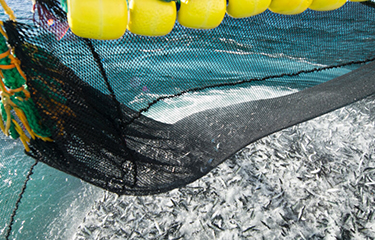The European Union and Norway signed three bilateral agreements that will result in a herring quota and fishing-access exchange.
The agreement will “significantly limit” herring catches in the Skagerrak and the Kattegat, as well as in the North Sea. As part of the wider agreement, reciprocal access to jointly managed stocks in the North Sea will decrease slightly – the E.U. will have access to up to 85 percent of pelagic stocks included in Norway’s quota for Atlanto-Scandian herring. Norway will in turn gain access to E.U. waters to fish 150,000 MT of blue whiting. The E.U. will also receive 9,150 MT of Arctic cod, while transferring 74,000 MT of blue whiting to Norway.
“This agreement secures reciprocal access to waters and important fishing opportunities for fishers on both sides,” E.U. Commissioner for the Environment, Oceans and Fisheries Virginijus Sinkevičius said. “I welcome the jointly agreed measures to ensure the sustainability of fish stocks, especially for the recovery of Western Baltic herring. While challenges remain, this agreement sets the basis for positive cooperation on both sides.”
For the overall Atlanto-Scandian herring catch in the Northeast Atlantic, the International Council for the Exploration of the Seas (ICES) said the total allowable catch (TAC) should be no more than 511,171 metric tons (MT) – but that same advice also suggested there should be no catch at all in the Skagerrak region.
The E.U.-Norway agreement recognized the ICES advice was for zero catch in the Skagerrak region from 2019 onward due to the tenuous status of the Western Baltic Spring Spawning (WBSS) herring, but said the two parties used, “as an ad hoc approach,” the non-zero TAC established by the E.U. to calculate a TAC in Skagerrak.
As a result, the delegations established a TAC of 23,250 MT in the Skagerrak and Kattegat for 2023 – a 7.1 percent decrease compared to 2022. The delegations also agreed that to protect juveniles and small herring, and the WBSS herring, the quotas established for both Norway and the E.U. for the region could instead be fished in the North Sea. The E.U. said it intended to set a level of “actual catches of herring in the Skagerrak and Kattegat” of no more than 969 MT, and Norway said at least 90 percent of its quota for the region would be transferred to the North Sea.
In the negotiations, the Norwegian delegation said the current management regime for the area is outdated, and that they agreed to the various herring quotas “in expectation that a new, revised management regime for herring would be introduced for 2024 and onwards.”
The Northeast Atlantic pelagic fisheries have been the subject of intense debate in recent years as overfishing and management issues led both Atlanto-Scandian herring and blue whiting to lose Marine Stewardship Council certification in 2020.
The management problems for blue whiting pushed some of the world’s largest feed companies – which purchase large quantities of the species – to state they will no longer buy any of the species if management problems aren’t fixed.
Buyers have also asked for further cuts to the Atlanto-Scandian herring fishery, citing management issues that they say have been masked by “ unprecedented levels of recruitment.”
For its part, the E.U. said it is ready to consider different management regimes for the herring stock – so long as the new regime does not impact the relative shares of the species and continue to reduce incidental juvenile bycatch.
The issue has also been a bone of contention for Ireland, which has criticized both parties for targeting blue whiting in Irish waters.
Photo courtesy of the Norwegian Seafood Council







